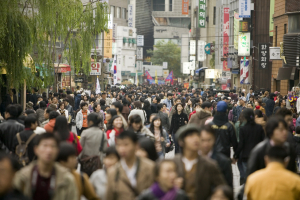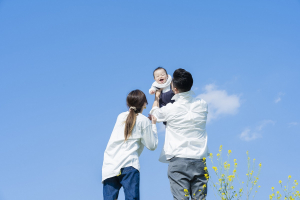
Gender Stereotypes among Japanese Voters: The Long Road to Political Parity
August 14, 2023
R-2023-021E
Fewer than 10% of Japan’s lower house lawmakers are women, and there has never been a female Japanese prime minister. To what degree does this imbalance reflect voter biases? The authors present the results of a recent survey on gender stereotypes and voter attitudes toward female leadership in the political sphere.
* * *
Japan has never had a female prime minister since women secured the right to vote in 1946. In 2021, there were two women candidates for leadership of the majority Liberal Democratic Party, a position that all but guarantees its holder the post of prime minister. That was a first for the long-ruling LDP, but neither Seiko Noda nor Sanae Takaichi came close to winning the election.
More generally, Japan ranks extremely low in global indices of political gender parity, with women occupying just 9.9% of the seats in the House of Representatives (far below the 24% average for members of the Organization for Economic Cooperation and Development). How do we account for this yawning political gender gap? One contributing factor could be an anti-female bias fueled by gender stereotypes. In 2019, we conducted a study to ascertain the kinds of stereotypes the Japanese people harbor with regard to men and women politicians and to gauge their feelings about having a woman prime minister (Endo and Ono 2023). In the following, we provide an overview of our research and its findings.
Policy and Personality Stereotypes
Our study was built on the foundation of research carried out earlier in the United States. In part to facilitate comparison, we modeled our questions and items closely on those used in a survey conducted by Kathleen Dolan (2014) of the University of Wisconsin–Milwaukee. (For a more detailed and technical discussion of our study, see Endo and Ono 2023.)
To begin with, we asked respondents to consider 11 policy areas one by one and tell us whether they thought men or women were better able to handle them. For each area, they were asked to choose either “male politicians,” “female politicians,” or “neither.” Figure 1 charts the results of our questionnaire, together with those generated by the Dolan survey, where applicable.
Figure 1. Policy Stereotypes among Japanese and American Voters

Source: Endo and Ono 2023.
The graph reveals how similar Japanese voters’ gender stereotypes are to those of American voters. On the whole, the Japanese view women politicians as more suited to dealing with issues pertaining to childcare and child welfare, education, the low birthrate, social welfare, and health care. Like their American counterparts, they are inclined to view men as more competent to deal with immigration, the budget deficit, crime, the economy and employment, diplomacy, and national security.
There are some differences in perception, however. Judging from the results of the two surveys, American voters are more apt to view education as a “female” issue, and Japanese voters have a stronger bias toward men when it comes to the economy and the budget deficit.
Next let us examine gender stereotypes regarding personal attributes. In this section of the survey, we asked respondents to consider 10 personal traits individually and tell us whether they considered each one more applicable to female politicians, male politicians, or neither. Figure 2 graphs the results.
Figure 2. Personal Trait Stereotypes among Japanese and American Voters

Source: Endo and Ono 2023.
Once again, we found that Japanese and American gender stereotypes were quite similar. Overall, Japanese voters tend to regard women politicians as more compassionate, honest, and intelligent. On the other hand, they are apt to associate men with consensus building, decisiveness, leadership, political experience, and dominance. Trust was the only trait regarded (on average) as equally applicable to both genders.
A comparison suggests that, overall, Japanese voters are somewhat more likely than their American counterparts to view decisiveness, leadership, and experience as attributes of male, rather than female, politicians.
Gauging Gender Bias
How such gender stereotypes affect voter behavior is the subject of ongoing research, and the findings thus far have been inconsistent. Some US studies have concluded that gender stereotypes influence voter choice in different ways, depending on the conditions and issues; other studies indicate that party affiliation is a bigger factor than gender.
How, then, do Japanese voters feel about the idea of women serving in government positions that play to stereotypically male strengths? We decided to focus on the office of prime minister, which is generally viewed as demanding decisive and forceful leadership, and that of defense minister, which oversees the policy domain most strongly associated with “male” competence.
Ascertaining voters’ genuine feelings about having a woman leader is not as simple as asking them directly. On sensitive issues, survey subjects sometimes allow social attitudes and expectations to influence their answers instead of giving their honest response (social desirability bias). One technique political scientists use to mitigate such bias is the “list experiment” method. Groups of respondents are given lists of statements or ideas and asked how many of those items make them upset or angry. By comparing the results, researchers can estimate the prevalence of an opinion in a population without forcing individuals to state their views on specific questions.
We conducted such a list experiment to gauge Japanese voters’ opposition to having a woman in top leadership posts. The protocol was very similar to that employed by Burden, Ono, and Yamada (2017). Our study differed, however, in that we measured and compared opposition to women in two different leadership positions: prime minister and defense minister (in view of the strong link between male stereotypes and the field of national security).
To conduct our experiment, we randomly divided our respondents into three groups. One group was given a list containing four “nonsensitive” items to react to. The other two groups received lists that included those four items plus one sensitive item: either “a woman serving as prime minister” or “a woman serving as defense minister.” Subjects in each group were asked how many of the items on the list made them upset or angry—not which items.
One in Ten Opposed to a Woman Prime Minister
By comparing the responses of the different groups, we were able to determine that approximately 10% of respondents were opposed to having a woman prime minister, while 12% objected to a female defense minister (Table 1). In other words, in Japan there is slightly more opposition to a female defense minister than to a woman prime minister.
Table 1. List Experiment on Opposition to Women’s Political Leadership
|
|
Average number of items cited |
Difference |
Percent opposed (estimate) |
|
|
|
No sensitive item |
With sensitive item |
||
|
Prime minister |
1.50 |
1.60 |
0.10 |
10% |
|
Defense minister |
1.50 |
1.62 |
0.12 |
12% |
Source: Endo and Ono 2023.
But in which subgroups is such opposition most concentrated? We conducted a multivariate regression analysis to compare the strength of opposition by such attributes as gender, age group, and party affiliation. The charts in Figure 3 show the estimated proportions of respondents—broken down by attribute—who oppose a woman prime minister (black dot) and a woman defense minister (gray square). The horizontal lines represent the 95% confidence intervals from the regression model.
Figure 3. Multivariate Estimates of Opposition to Women Political Leaders

Source: Endo and Ono 2023.
The first general observation we can make regarding these results is that almost none of the subgroups displayed a markedly different rate of opposition to a female prime minister and a female defense minister. The greatest difference is seen among those around 70 years of age, who are more likely to oppose a woman serving as defense minister than as prime minister.
Interestingly, in this study we found no significant disparity between men’s and women’s attitudes. In this respect, our findings diverged from the US study, which found much stronger opposition to a female president among men than among women. On the other hand, like the American study, our analysis found that opposition to a woman in the nation’s top office is higher among younger voters.
In terms of party affiliation, opposition to a female prime minister or defense minister was estimated at 20% among respondents who identified as supporters of the ruling Liberal Democratic Party—more than 10 percentage points higher than among all other respondents (supporters of other parties and independents). Given the LDP’s longstanding control of the House of Representatives, these results suggest that any Japanese woman politician aiming for the nation’s highest office still faces formidable obstacles to success.
Closing the Political Gender Gap
We believe the results of our study have important implications for Japanese women seeking public office.
First, we found that Japanese voters, like their American counterparts, harbor definite stereotypes regarding the policy strengths and personal attributes of male and female politicians. Certainly, the prospect of a woman prime minister or defense minister challenges these stereotypes. When we conducted a list experiment to gauge the actual level of opposition to a woman prime minister among Japanese voters, we found about 10% opposed, with the proportion rising to 20% among LDP supporters. These figures roughly parallel the findings regarding public support for a female president in the United States. Given the LDP’s near monopoly on power over the years, women politicians may be facing a steep climb to the summit in Japan, just as in the United States.
That said, opposition to a woman president among American voters has dropped by about 50% in the decade between 2006 and 2016. Might opposition decline in Japan as well, as more women enter politics, paving the way for a woman prime minister?
Progress has been slow thus far, however. Japanese women are extremely underrepresented in the political sphere, occupying fewer than 10% of the seats in the House of Representatives. The reasons for this state of affairs are complex and varied, but the most direct and obvious factor is the wide disparity in the number of male and female candidates.
Under the Act on Promotion of Gender Equality in the Political Field, enacted in 2018, political parties fielding candidates for public office must strive to make the number of male and female candidates “as even as possible.” Such voluntary efforts alone seem unlikely to bring about gender parity in the political arena. That said, any move to institute formal quotas would face strong public opposition, among other hurdles. In the United States, empirical research is underway to determine what practical measures might be taken to increase the number of women running for office, with a focus on candidate recruitment. Further study is needed in Japan as well.
References
Burden, Barry C., Yoshikuni Ono, and Masahiro Yamada. 2017. “Reassessing Public Support for a Female President.” Journal of Politics 79 (3): 1073–78. https://www.researchgate.net/profile/Masahiro-Yamada-3/publication/316727946_Reassessing_Public_Support_for_a_Female_President/links/5a31e968aca2727144efce3d/Reassessing-Public-Support-for-a-Female-President.pdf.
Dolan, Kathleen. 2014. When Does Gender Matter? Women Candidates and Gender Stereotypes in American Elections. Oxford University Press.
Endo, Yuya, and Yoshikuni Ono. 2023. “Opposition to Women Political Leaders: Gender Bias and Stereotypes of Politicians Among Japanese Voters.” Journal of Women, Politics & Policy 44 (3): 371–86. https://www.tandfonline.com/doi/full/10.1080/1554477X.2023.2174365.









